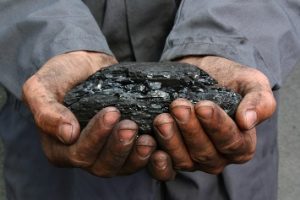EPA Administrator Scott Pruitt has been echoing President Donald Trump’s claims that the administration is paving the way for a resurgence of the coal mining sector and the use of coal as a cheap, abundant, and reliable source of energy. In an article written for The Washington Times and posted on EPA’s News Release site, Pruitt said the Obama administration’s “war on coal” is over and “relief—and prosperity—is on the way.”

But the notion that removal or relaxation of federal regulations that apply to mining and coal-fired power plants will reenergize the industry is almost universally rejected by advocates of renewable energy. Perhaps more relevant to the Trump agenda, these sources believe that even stabilization of the coal markets is not likely to bring back many if any of the 150,000 coal jobs that have been lost over the past 40 years.
Strong Regulatory Relief
Certainly from the perspective of environmental regulation, the president appears to be doing all he can to remove obstacles that coal companies claim are inhibiting their growth and causing job loss. In February, Trump signed legislation to end the Office of Surface Mining’s Stream Protection Rule, an action by the Obama administration that constrained mountaintop coal mining operations. The EPA is also moving forward on reviews of the Clean Power Plan (CPP) and Mercury and Air Toxics Standards (MATS), two other Obama-era rules the coal industry and its supporters say were written specifically to shrink the role of coal in the nation’s energy profile.
Coal Consumption Down
But so far, the regulatory relief does not appear to be benefiting coal producers. In its April 17, 2017, quarterly coal report, the Energy Information Administration (EIA) says that coal production in the 4th quarter of 2016 was 2.3 percent higher than the previous quarter, but 3.7 percent lower than the 4th quarter of 2015. A significant amount of this coal is exported, 19.3 million tons in the 4th quarter of 2016, a remarkable increase of 54.1 percent over the previous quarter. But the more revealing figure is the decline in U.S. coal consumption—19 percent lower in the 4th quarter of 2016 compared to the previous quarter. Although it is probably still too early to gauge the full impact of the Trump administration’s actions, the decline in actual consumption is so precipitous that it is difficult to attribute it entirely to regulation and, therefore, equally difficult to claim that a change in regulation will significantly reverse the trend.
Is the ‘War on Coal’ Really Over?
That is the argument that some analysts have been raising to refute that claims that coal jobs are coming back. Employment in the coal industry had been in steep decline long before the CPP and MATS arrived. The sector had about 220,000 jobs in 1980. The current number is estimated at 65,000. Displacement of coal as an energy source by cheaper and abundant natural gas is a well-known factor in the decline of coal jobs. But there is more to it. Coal mining companies are simply finding that they need fewer workers to operate the giant machinery that does most of the mining today. While energy companies continue to fight regulation and support the Trump administration’s pro-coal campaign, they also know that presidential terms are very short when compared to the lifetime of a coal-fired power plant, and investing in a facility that may once again be thrown into War on Coal II is a high-risk strategy.
The Appeal of Wind Energy
Just as important is the continuously strong growth of renewable energy and, particularly, wind energy. The American Wind Energy Association (AWEA) recently reported that 908 utility-scale turbines were installed in the 1st quarter of 2017, totaling 2,000 megawatts (MW) of capacity. “This is the wind industry’s strongest start in eight years,” says the AWEA. “The early burst of activity reflects how 500 factories in America’s wind power supply chain and over 100,000 wind workers are putting stable, multi-year federal policy to work. The industry is now in year 3 of a 5-year phase-down of the Production Tax Credit.”
The AWEA also states that this growth is benefiting landowners. “Expanding wind farms continue to benefit rural America, since over 99 percent of wind farms are built in rural communities,” says the AWEA. “According to AWEA’s recently released 2016 Annual Market Report, wind now pays over $245 million per year in land-lease payments to local landowners, many of them farmers and ranchers.” Considering that energy use is down, it is difficult to see how coal will rejuvenate in a diminished market.
In his article, Pruitt says it is not EPA’s role to “pick winners and losers through regulation.” But even without regulation, the coal industry has a very steep hill to climb to regain even a small portion of its historic dominance.
